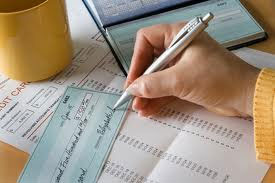
In today’s increasingly digital world, data breaches have become an all-too-common occurrence. The most recent breach in America, which targeted a major financial institution, has once again brought the issue of cybersecurity to the forefront of national conversation. The breach, which compromised the personal and financial data of millions of Americans, serves as a stark reminder of the vulnerabilities that exist in our digital infrastructure.
What Happened?
The latest data breach involved the unauthorized access of sensitive information from a prominent U.S. financial institution. According to initial reports, cybercriminals exploited a vulnerability in the company’s online systems, allowing them to infiltrate databases that contained personal information such as names, Social Security numbers, credit card details, and bank account information. While the exact number of affected individuals is still being determined, early estimates suggest that millions of Americans may have had their data compromised.
The breach was detected when unusual activity was noticed on the institution’s servers, prompting an internal investigation. Unfortunately, by the time the breach was discovered, the attackers had already accessed and potentially exfiltrated large amounts of data. The incident has raised serious concerns about the state of cybersecurity, not just within this particular institution but across all sectors that handle sensitive data.
The Consequences
The consequences of a data breach of this magnitude are far-reaching. For the affected individuals, the immediate concern is the potential for identity theft and financial fraud. With access to personal information, cybercriminals can open fraudulent accounts, make unauthorized transactions, and even sell the data on the dark web, where it can be used by other criminals.
Beyond the individual level, data breaches can also undermine trust in institutions and the broader financial system. When consumers feel that their data is not secure, they may be less willing to engage in online transactions or share personal information, which can have a ripple effect on the economy.
Moreover, the cost of dealing with the aftermath of a data breach is substantial. Companies often face significant financial penalties, legal fees, and the costs associated with notifying affected individuals and providing credit monitoring services. There is also the potential for long-term damage to the company’s reputation, which can impact its bottom line for years to come.
What Can We Do About It?
While it may seem that individuals are powerless in the face of such large-scale cyberattacks, there are steps that we as citizens can take to protect ourselves and mitigate the impact of data breaches.
- Monitor Your Accounts Regularly: Keep a close eye on your bank and credit card accounts for any suspicious activity. Set up alerts that notify you of transactions, and report any unauthorized charges immediately.
- Use Strong, Unique Passwords: Ensure that your online accounts are protected by strong, unique passwords. Avoid using the same password across multiple sites, and consider using a password manager to keep track of your credentials.
- Enable Two-Factor Authentication (2FA): Whenever possible, enable two-factor authentication on your accounts. 2FA adds an extra layer of security by requiring you to verify your identity through a secondary method, such as a text message or an authentication app.
- Be Cautious with Personal Information: Be mindful of the information you share online, especially on social media. Cybercriminals often use publicly available information to answer security questions or craft phishing attacks.
- Stay Informed: Keep up to date with the latest news on data breaches and cybersecurity. Knowing which companies have been compromised can help you take timely action to protect your data.
- Freeze Your Credit: If you believe your information has been compromised, consider freezing your credit with the major credit bureaus. A credit freeze makes it more difficult for criminals to open new accounts in your name.
- Advocate for Stronger Protections: While individual actions are important, it’s also crucial to push for stronger cybersecurity measures at the corporate and governmental levels. Support legislation that requires companies to implement better security practices and hold them accountable for protecting consumer data.
- Use Identity Theft Protection Services: Consider enrolling in an identity theft protection service that monitors your personal information and alerts you to any potential threats.
Conclusion
The recent data breach in America is a sobering reminder of the vulnerabilities that exist in our digital world. While we cannot eliminate the risk of cyberattacks entirely, we can take steps to protect ourselves and mitigate the damage. By staying vigilant, using robust security practices, and advocating for stronger protections, we can play a role in safeguarding our personal information in an increasingly connected world.



